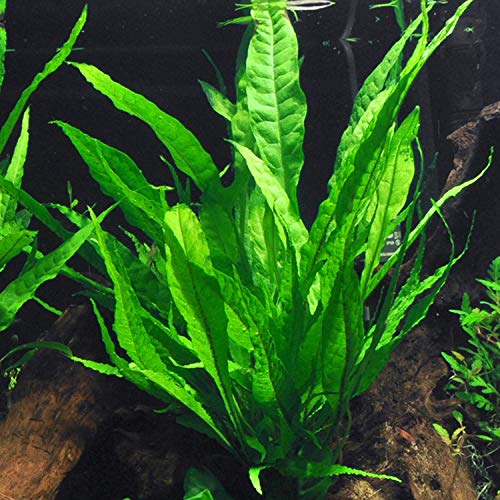

Hold it against the glue for 30 seconds, and then let air dry for another 3 minutes. Simply take the piece of décor you want the fern attached too and make a simple bead of glue. My favorite way to plant Java Fern is to use super glue gel. You can also choose where it will go by burying the roots in some gravel or tying it onto a piece of wood, rock, or other décor. Java Fern will thrive while floating, or the current may allow it to attach to something that its roots can hold onto. Really - even if you just drop it in, it'll start growing. Planting Java Fern is easy simply throw it into your water. Now if you've found this article, you're obviously looking for more info on Java Fern. Java Fern tolerates most lighting conditions and many environments – from soft acidic water to alkaline conditions, and even brackish tanks! It is also easy to find in most local fish stores but if not, there is always some available on our website. It slow growth, unique leaf structure, and reproduction method makes it an aquarium smash hit. Just make sure to keep it trimmed back to prevent it from becoming too bushy, especially in smaller tanks.Java Fern is one of the world’s most widely used plants in planted aquariums. It’s easy to plant and can be attached to just about any surface you can dream up. This plant has thick leaves that are typically ignored by fish that like to eat live plants. It’s hardy, easy to care for, and requires minimal lighting to thrive. Java fern is a fantastic plant for your tropical freshwater tank. Image Credit: chonlasub woravichan, Shutterstock Aim to trim your Java fern regularly and remove plantlets as needed to prevent overgrowth.
#Java fern aquarium plant full#
The primary concern would be that this plant can get quite full and take up a lot of tank space, especially once it starts reproducing. When it comes to potential concerns for your tank, there are very few.

Thankfully, Java fern has not shown itself to be particularly invasive in the United States. Image Credit: You Touch Pix of EuToch, Shutterstock This is one of the most popular aquarium plants and is extremely easy to find in brick-and-mortar stores and online shops.

When it comes to finding Java fern in the Western world, you don’t have to look further than the shelves of your local pet stores. The Java fern is named for its origin on the island of Java, although it is native to a variety of parts of Indonesia, Malaysia, Thailand, India, and China. They serve a reproductive function for the plant, much like the dark bumps that appear on the leaves of terrestrial ferns as well. However, dark bumps on the leaves are normal as these plants grow. These are often incorrectly identified as everything from snail or fish eggs to fungal infections. The mature size of the plant is dependent on the variety, but most Java ferns don’t grow beyond 13–14 inches in height.Īs they age, many Java ferns will develop dark bumps on the leaves. There are multiple varieties of Java fern, but they all have long leaves that grow near each other, giving the plant a bushy and full appearance. It has thick leaves that are often left alone by fish prone to eating plants, like goldfish. It consists of rhizomes and leaves, but lacks true roots. The Java fern can grow on a variety of surfaces, thanks to its rhizomes that help root it in place.


 0 kommentar(er)
0 kommentar(er)
